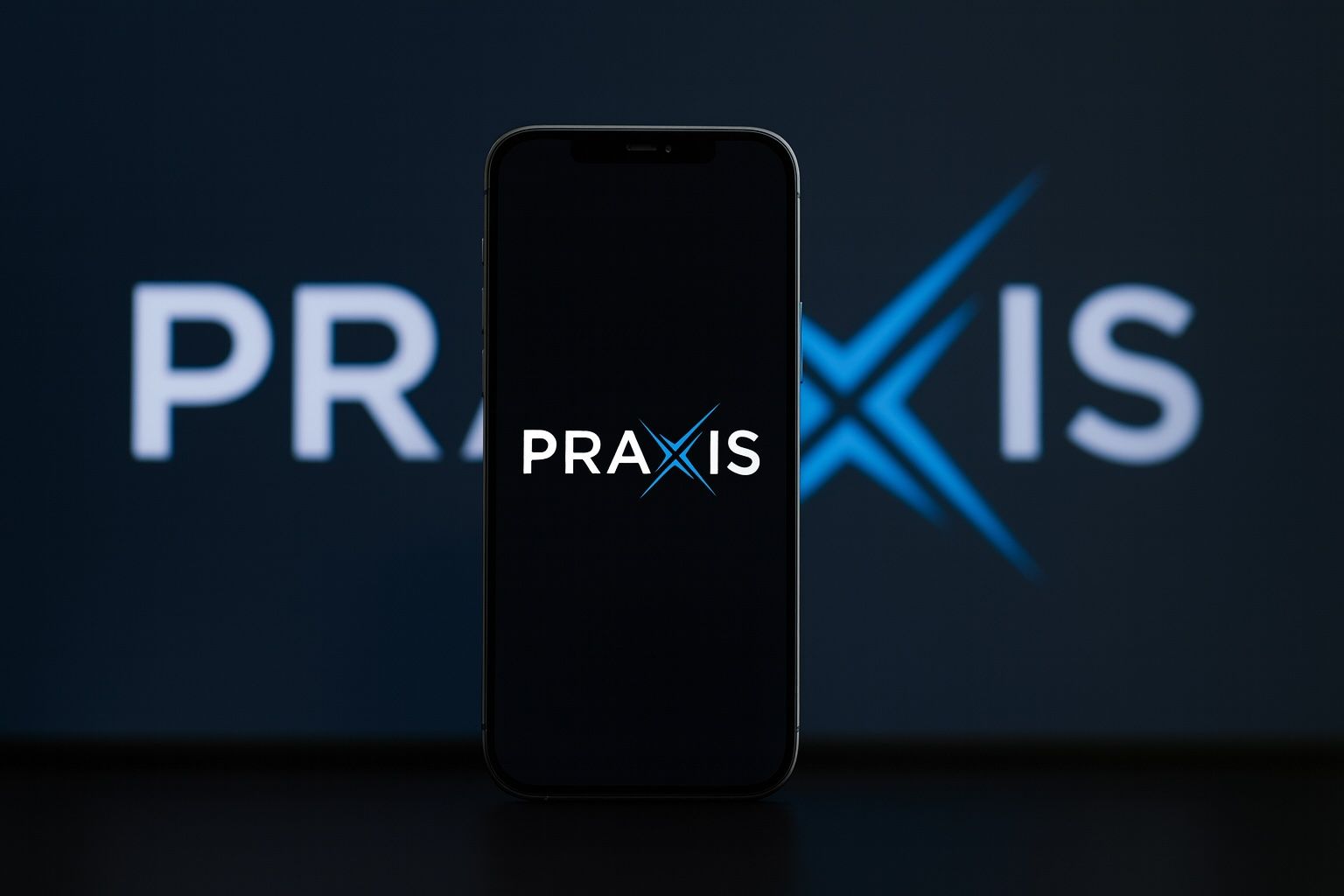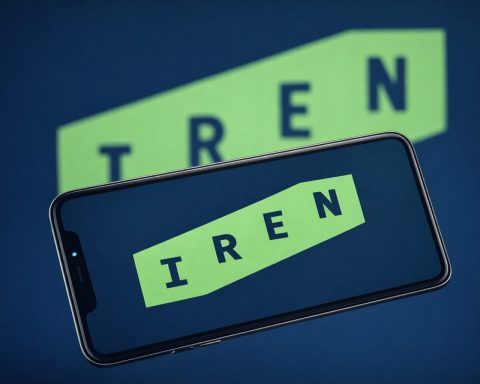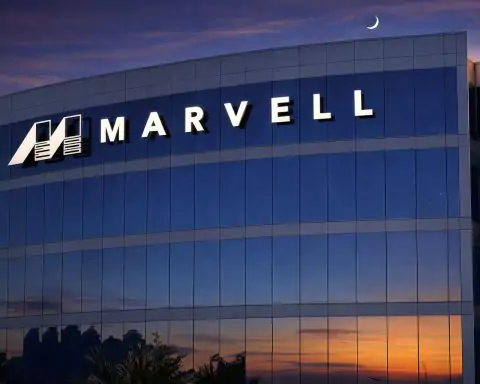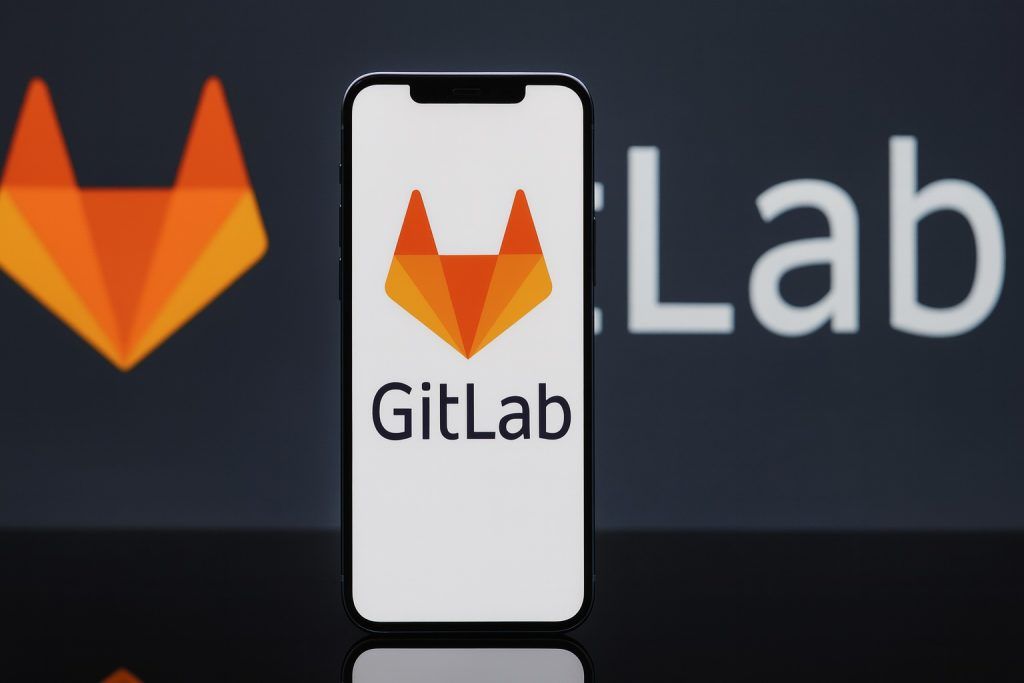- Shares Erupt on Trial News: Praxis Precision Medicines (NASDAQ: PRAX) stock surged from $57.35 at Wednesday’s close to about $162 on Thursday – a roughly 180% jump to new 52-week highs [1]. The spike added nearly $3 billion to Praxis’s market cap in one day [2], as investors piled in on breakthrough trial results.
- Game-Changing Phase 3 Success: Praxis’s lead drug ulixacaltamide achieved a positive Phase 3 outcome in essential tremor, a movement disorder with no approved targeted treatment [3]. Patients on ulixacaltamide saw significantly improved daily functioning (by 4.3 points vs placebo) and met all key goals in the trial [4]. A second study confirmed sustained benefits (55% of treated patients maintained response vs 33% on placebo) with no serious side effects reported [5].
- First ET Therapy in Sight: The results mark a potential breakthrough – if approved, ulixacaltamide would become the first-ever FDA-approved therapy for essential tremor, a condition affecting millions [6]. Praxis plans to file for U.S. approval by early 2026, with ~80% of its submission documentation already prepared [7]. Regulators have been engaged early, and the company has requested a pre-NDA meeting as it moves swiftly toward commercialization [8] [9].
- Wall Street Turns Bullish: The stunning data flipped sentiment overnight. Analysts are hiking price targets dramatically – Oppenheimer raised its target to $250 (Outperform rating), Truist to $360 (Buy), and Guggenheim to $350, among others [10]. Baird called the trial results “thesis changing,” boosting its target to $275 [11]. The consensus outlook on PRAX has shifted upward: TipRanks now reports a “Strong Buy” consensus with an average ~$106 12-month target (up from ~$85 before) [12] [13]. Many see ulixacaltamide as a potential blockbuster in the essential tremor market, which Praxis estimates could translate to multi‐billion dollar annual sales [14].
- Cash Raise to Fuel Pipeline: Capitalizing on the rally, Praxis announced a public stock offering on Oct. 16 to bolster its finances [15]. The company – which had ~$447 million in cash mid-2025 (enough to fund operations into 2028) [16] – will use the proceeds to support ulixacaltamide’s launch prep and advance its pipeline of CNS therapies. Praxis is also developing other candidates, including PRAX-562 (relutrigine) for rare pediatric epilepsy (a program granted FDA Breakthrough Therapy status) [17] and vormatrigine for adult epilepsy, reflecting broader long-term ambitions.
Record Stock Surge on Phase 3 Breakthrough
Praxis Precision Medicines shares skyrocketed on October 16, 2025, after the biotech reported game-changing Phase 3 trial results for its essential tremor drug. The stock closed that Thursday at $162.71, up over 183% in a single day [18]. Earlier that morning, Praxis announced that ulixacaltamide – its experimental therapy for essential tremor – had succeeded in two pivotal late-stage studies. The news sent PRAX stock soaring more than threefold before the opening bell [19] [20], smashing its previous highs. By midday, Reuters estimated Praxis was on track to add about $2.67 billion to its market capitalization if gains held [21]. The rally gave the company a market value near $4 billion, up from roughly $1 billion just a day prior.
What drove this explosive surge? In a word: breakthrough efficacy. Praxis’s Phase 3 program (dubbed Essential3) tested ulixacaltamide in adults with essential tremor – a neurological disorder causing involuntary shaking. In the first trial (473 patients over 12 weeks), ulixacaltamide patients showed a 4.3-point improvement on a standard daily living scale versus placebo [22] [23], a highly significant gain (p<0.0001). All key secondary endpoints were also met [24], indicating improvements in disease severity and patient and clinician impressions. A second trial (238 patients) used a randomized withdrawal design, and it too succeeded: 55% of those who stayed on ulixacaltamide maintained their tremor improvements, compared to just 33% of patients switched to placebo (p=0.0369) [25]. These robust results far exceeded expectations – especially since an interim analysis earlier in the year had predicted failure. In February, an independent data monitoring committee had recommended stopping the trial for futility, believing it unlikely to meet its main goal [26]. Praxis chose to press on regardless, and that decision paid off dramatically. “The trial data win validates [a] major opportunity for the company after Wall Street had given up on the drug” said Piper Sandler analyst Yasmeen Rahimi, noting how surprising the comeback was [27].
Beyond efficacy, safety was encouraging. Praxis reported no drug-related serious adverse events with ulixacaltamide [28], and the side effect profile (e.g. mild constipation, dizziness, “brain fog”) was consistent with prior trials and considered manageable [29] [30]. “Today, I think what we talk about is it’s not luck, it’s certainty,” Praxis CEO Marcio Souza said, emphasizing the confidence instilled by the final data after early doubts [31] [32]. He noted that patients in the studies had been living with essential tremor for an average of 30 years with worsening symptoms and no effective options [33] – underlining how meaningful this breakthrough could be for the ET community. Trial investigators were likewise optimistic: Dr. Alexander Shtilbans, a lead investigator, said “these results give hope that ulixacaltamide could be widely used” for essential tremor patients [34]. Another co-lead researcher, Dr. Salima Brillman, called the drug “a real opportunity to help people regain their independence” after decades of unremitting tremors [35]. Such commentary from experts underscores the transformative potential of Praxis’s achievement.
Ulixacaltamide: First ET Therapy Within Reach
The Essential3 trial success positions ulixacaltamide to become the first-ever approved therapy specifically for essential tremor, should regulators give the green light [36]. Despite essential tremor (ET) affecting an estimated 7–10 million people worldwide (including several million in the U.S.), there are no medications developed expressly for this condition – patients have had to resort to off-label use of blood pressure or anti-seizure drugs with limited efficacy [37]. “There’s no specific drug approved for essential tremor and we’re here to change that,” CEO Souza remarked on an investor call [38] [39]. Indeed, the strong Phase 3 data suggest ulixacaltamide could fill a huge unmet need as a precision treatment targeting the root cause of tremors. (The drug works by selectively inhibiting overactive T-type calcium channels in the brain’s motor circuits [40] [41] – a novel mechanism aiming to quell the abnormal neuronal firing behind tremors.)
Buoyed by the trial outcome, Praxis is moving quickly on the regulatory front. The company plans to submit a New Drug Application (NDA) to the FDA by early 2026 for ulixacaltamide [42]. About 80% of the required documentation is already prepared, and Praxis has requested a meeting with the FDA to discuss the NDA pathway [43] [44]. The goal is to expedite approval so that this therapy can reach patients as soon as possible. “We look forward to the opportunity to have a pre-NDA meeting with the FDA soon to discuss the potential NDA,” Souza said [45], expressing confidence in the next steps. If all goes well, ulixacaltamide’s approval could come later in 2026, bringing relief to patients who have never had an FDA-approved treatment for ET.
It’s worth noting how unexpected this victory was given the trial’s earlier hurdles. In March, when Praxis disclosed the data monitoring committee’s futility recommendation, the stock plunged and many assumed ulixacaltamide was doomed [46]. However, Praxis made adjustments – including a protocol change (with FDA input) to focus on the 56-day timepoint for the primary endpoint, based on prior Phase 2 data [47] – and kept the studies going fully blinded. The final readout vindicated this perseverance: “Even without the change, the trial is successful… the trial is positive independently of how it’s analyzed at [day] 56 or 84,” Souza noted, explaining that outcomes were statistically significant at both timeframes [48] [49]. In other words, the drug’s effect was robust enough to shine through, interim pessimism notwithstanding. This reversal from near-failure to resounding success has made the ulixacaltamide story one of 2025’s biggest biotech turnarounds.
Bolstering Finances: New Stock Offering and Pipeline Plans
After the massive stock jump, Praxis wasted no time in capitalizing on investor enthusiasm. On Oct. 16, the company announced a proposed public offering of its common stock (and prefunded warrants for certain buyers) to raise fresh capital [50]. All shares will be issued by Praxis itself, with underwriters granted a 30-day option to purchase an additional 15% of the offering shares [51]. Leading biotech-focused banks – TD Cowen, Piper Sandler, Guggenheim, and Truist – are joint book-runners on the deal [52]. The offering’s size and pricing will be determined shortly, but Praxis made clear it wants to leverage the price spike to strengthen its balance sheet. (Notably, the offering is being made under an automatic shelf registration filed in late 2024, indicating Praxis had preemptively put financing machinery in place [53].)
Why raise money now? As a clinical-stage biotech with no product revenues yet, Praxis sustains itself via cash reserves – and developing breakthrough drugs isn’t cheap. The company’s R&D expenses have ramped up significantly: Praxis posted a $71.1 million net loss in Q2 2025, more than double its loss a year prior, as multiple late-stage trials progressed [54]. However, Praxis wasn’t cash-poor going into this week. It reported ~$446 million in cash and investments as of mid-2025, which management said was sufficient to fund operations into 2028 at the then-current burn rate [55]. In fact, just before the trial readout, Praxis had set up a $250 million at-the-market (ATM) equity program with TD Cowen (replacing an unused prior ATM facility) to opportunistically tap investors [56]. Now, with PRAX shares trading several times higher, a traditional public offering enables the company to raise a substantial sum with minimal dilution relative to last week’s prices. The proceeds will fortify Praxis’s war chest for bringing ulixacaltamide to market – funding manufacturing, regulatory filings, and a potential commercial launch – as well as support its other pipeline programs [57] [58].
Those pipeline programs are an important part of Praxis’s long-term strategy. The company specializes in therapies for central nervous system (CNS) disorders, particularly where neural excitability is out of balance [59] [60]. Ulixacaltamide for essential tremor is the most advanced, but Praxis has others in the works:
- PRAX-562 (relutrigine) for rare pediatric epilepsies has shown promise. In July 2025, the FDA granted it Breakthrough Therapy Designation for SCN2A and SCN8A developmental epileptic encephalopathies [61] – a status that highlights its potential and offers regulatory support. CEO Souza called this recognition “a significant milestone” for the program [62]. PRAX-562 is currently in Phase 2 and heading toward pivotal trials.
- PRAX-944 (ulixacaltamide) itself may have further applications. While ulixacaltamide’s Phase 3 success in essential tremor is grabbing headlines now, Praxis will likely explore additional indications in movement disorders where tremors play a role.
- PRAX-114 (vormatrigine) is another lead compound, aimed at epilepsy and depression. In an earlier Phase 2 trial (the RADIANT study), vormatrigine yielded a 56.3% median reduction in seizures [63] – encouraging efficacy that led Praxis to initiate Phase 3 trials (the “POWER” studies) in epilepsy. Data from the first POWER trial are anticipated by late 2025 or early 2026 [64].
These programs underscore Praxis’s broader ambitions beyond just essential tremor. They also help explain the company’s cash needs – running multiple Phase 3 trials in parallel is costly, hence the proactive fundraising. With the new capital infusion from the stock offering, Praxis aims to have the runway to advance all these efforts without financial strain. As management often points out, biotech development is a long game, and maintaining a strong balance sheet through volatile market cycles is crucial for seeing drugs through to approval. Investors generally reacted positively to the offering news, recognizing that shoring up cash now is a prudent move while sentiment is bullish.
Analysts See Major Upside – But Note Risks
Wall Street’s reaction to Praxis’s trial win has been emphatically positive. Many analysts had been cautious on PRAX prior to this week – the stock was lightly covered and, as of early October, carried a consensus “Moderate Buy” rating with an average target price around $85 [65]. That all changed once the Phase 3 data hit. Updated analyses now show a “Strong Buy” consensus, and firms are racing to upgrade their outlooks [66]. “For Praxis, this is a game-changer,” wrote one analyst, capturing the prevailing mood. Price targets have been raised into the triple-digits across the board: for example, Oppenheimer upped its target from $115 to $250 (maintaining an Outperform rating) after the “unexpected success” of ulixacaltamide’s trial [67]. Truist Securities jumped its target to $360 (from a prior ~$85), reiterating a Buy and citing “blockbuster potential” for the drug in essential tremor [68]. Guggenheim Securities issued a new $350 target, noting ulixacaltamide hit key endpoints set in consultation with the FDA [69]. TD Cowen raised its target to $251, highlighting that the trial met its primary goal and validates the drug’s mechanism [70]. Meanwhile, Baird described the results as “thesis changing” – essentially reshaping the investment case for Praxis – and hiked its target to $275 [71]. Even firms that had been skeptical are revising their stance. “Finally, some good news in neurology,” one research note proclaimed, underscoring how rare it is to see a CNS drug succeed so convincingly in Phase 3.
The new average price targets imply further upside even after PRAX’s giant one-day leap – though there’s a wide range, reflecting differing views on just how big ulixacaltamide could be. TipRanks calculates an average target of ~$105.90 now (among a dozen analysts) [72], but that figure includes some lagging or more conservative estimates. Many bulls clearly believe the stock can go much higher. Several analysts explicitly called ulixacaltamide a potential “blockbuster” therapy, meaning peak annual sales could exceed $1 billion. In fact, Praxis’s own preliminary market modeling supports that notion: Souza hinted that even the low end of their sales forecast for ulixacaltamide is in the “mid-to-high single-digit billions” of dollars per year [73] if the drug reaches the large ET patient population. With no direct competition (ulixacaltamide would be first to market) and essential tremor’s prevalence, some on Wall Street see a pathway for Praxis to become a multibillion-dollar revenue company in the long run. This kind of optimism underpins the aggressive price targets in the $250–$360 range, which assume ulixacaltamide’s commercial success and perhaps additional pipeline wins.
Still, not everyone is fully swept up in euphoria. A few analysts urge caution given the realities of drug development and valuation. After a +180% stock jump, Praxis’s market cap has swelled to levels that already bank in considerable future growth. As of Thursday’s close, PRAX’s ~$4 billion valuation “reflects sky-high expectations” that ulixacaltamide and other pipeline candidates will deliver on their promise [74]. Any hiccup – such as unexpected FDA requirements, delays in approval, or a need for additional studies – could spark a pullback. “Success in neurology trials can be binary,” one commentary warned, “– failures or setbacks could send the stock sharply down.” [75] [76] In the near term, investors will be closely watching how the FDA responds to Praxis’s data package and whether any safety or efficacy nuances emerge when full results are published. Competition and pricing are also longer-term considerations. While ulixacaltamide would have a first-mover advantage in ET, other companies may accelerate their own programs in movement disorders now that Praxis has validated this mechanism. Pricing of a new therapy for millions of patients could draw payer scrutiny as well, though given the lack of alternatives, uptake should be strong if the drug is approved.
Overall, experts agree that Praxis now stands at a pivotal moment. The company has a clear shot at bringing an entirely new therapy to a neurology market in dire need, which could transform its financial profile practically overnight. There is also more to come in the pipeline – for example, Phase 3 epilepsy trial readouts (for vormatrigine and PRAX-562) are expected over the next year [77], offering additional catalysts (or risks) for the stock. In the short term, traders should expect high volatility: after such a parabolic rise, some profit-taking or dips (especially as the new stock offering comes into play) wouldn’t be surprising. But for long-term investors, the central question is whether Praxis can execute on this breakthrough and turn it into sustainable growth. As Reuters summarized, the Phase 3 win “gives hope” for a much-needed therapy in essential tremor [78] – and it has undeniably put Praxis Precision Medicines on the map as a potential rising star in biotech. The coming months, with regulatory interactions and possibly partnership or acquisition chatter, will determine how the PRAX story unfolds from here. For now, Praxis’s stock is riding a wave of optimism, powered by clinical triumph, and the biotech world is watching closely to see if that momentum can carry through to the ultimate prize: FDA approval and a successful launch.
Sources: Praxis Precision Medicines press releases and investor materials; Reuters, Yahoo Finance and GlobeNewswire news reports; analyst notes via TipRanks and MarketBeat; TechStock² (ts2.tech) market commentary [79] [80] [81]; MedCity News and Benzinga for industry context. All information is current as of Oct. 16, 2025.
References
1. ts2.tech, 2. www.reuters.com, 3. www.reuters.com, 4. ts2.tech, 5. ts2.tech, 6. www.reuters.com, 7. www.reuters.com, 8. www.globenewswire.com, 9. www.globenewswire.com, 10. www.investing.com, 11. www.investing.com, 12. ts2.tech, 13. ts2.tech, 14. medcitynews.com, 15. www.investing.com, 16. ts2.tech, 17. ts2.tech, 18. medcitynews.com, 19. www.reuters.com, 20. www.reuters.com, 21. www.reuters.com, 22. www.globenewswire.com, 23. www.globenewswire.com, 24. www.globenewswire.com, 25. ts2.tech, 26. www.reuters.com, 27. www.reuters.com, 28. www.globenewswire.com, 29. ts2.tech, 30. www.globenewswire.com, 31. www.reuters.com, 32. www.reuters.com, 33. www.globenewswire.com, 34. ts2.tech, 35. ts2.tech, 36. www.reuters.com, 37. www.reuters.com, 38. medcitynews.com, 39. medcitynews.com, 40. medcitynews.com, 41. medcitynews.com, 42. www.reuters.com, 43. www.reuters.com, 44. www.globenewswire.com, 45. www.globenewswire.com, 46. medcitynews.com, 47. medcitynews.com, 48. medcitynews.com, 49. medcitynews.com, 50. www.globenewswire.com, 51. www.globenewswire.com, 52. www.globenewswire.com, 53. www.globenewswire.com, 54. ts2.tech, 55. ts2.tech, 56. ts2.tech, 57. www.investing.com, 58. www.investing.com, 59. www.investing.com, 60. www.investing.com, 61. ts2.tech, 62. ts2.tech, 63. ts2.tech, 64. ts2.tech, 65. ts2.tech, 66. ts2.tech, 67. www.investing.com, 68. www.investing.com, 69. www.investing.com, 70. www.investing.com, 71. www.investing.com, 72. ts2.tech, 73. medcitynews.com, 74. ts2.tech, 75. ts2.tech, 76. ts2.tech, 77. ts2.tech, 78. ts2.tech, 79. ts2.tech, 80. www.reuters.com, 81. www.investing.com







